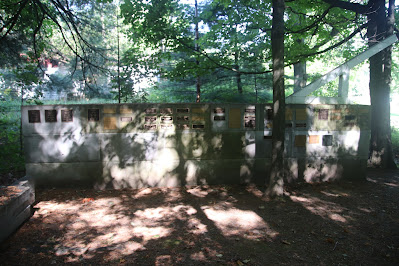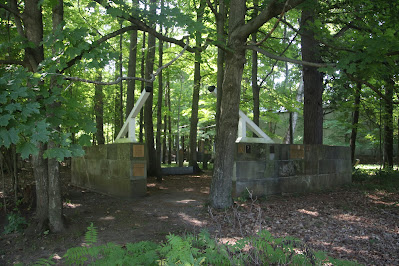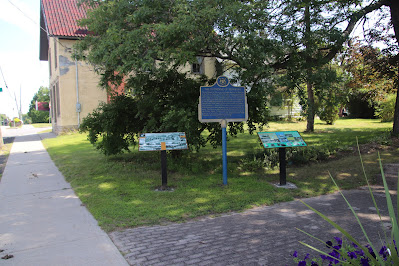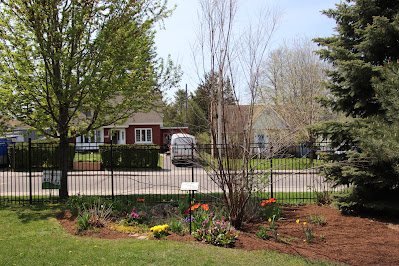The plaque honouring the first and last victims of World War I hangs on a pillar in the main hallway on the ground floor of Ottawa City Hall, south of Laurier Avenue West and west of the Rideau Canal.
Dušan Ðonović (Душан Ћоновнћ), age 16, student of the Royal Academy of Commerce in Belgrade, volunteer in the Unit of Voivoda Jovan Babunski. Died of wounds from artillery fire on the City of Belgrade, from the Austro-Hungarian Danube river monitor ship "Bodrog", the first day of war July 28th 1914 11:00 p.m.
George Lawrence Price, age 26, Served with "A" Company of the 28th Battalion Canadian Expeditionary Force in Belgium. Fatally shot by a German sniper at 10:58 a.m. on November 11th 1918. He died just two minutes before the armistice ceasefire that ended the war, coming to effect at 11:00 a.m.
Dušan Ðonović (Душан Ћоновнћ), 16 ans, était élève à l'Académie royale de commerce de Belgrade. Soldat volontaire dans l'unité de Voïvode Jovan Babunski, il est décédé après avoir été atteint par des tirs d'artillarie sur Belgrade, provenant du «Badrog», navire austro-hongrois qui croisait sur le Danube, au premier jour de la guerre, le 28 juillet 1914 à 23h.
George Lawrence Price, 26 ans, servait dans la compagnie A de 28e bataillon du Corps expéditionnaire canadien en Belgique. Touché mortellement par un tireur d'élite allemande le 11 novembre 1918 à 10 h 58, il a succombé à peine deux minutes avant la proclamation de l'armistice, qui mit fin à la guerre ce même jour à 11h.















































